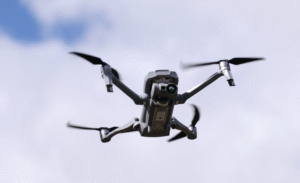By Viesturs Deksnis.
For the first time, Riga hosted the international Drone Summit 2025, a landmark event uniting global leaders in unmanned aerial systems to explore the future of drone technology in defense, industry, and innovation. The summit aimed to foster collaboration, showcase cutting-edge solutions, and strengthen the Baltic region’s role in the global drone ecosystem.
Among the standout participants was Atlas Aerospace, a key member of the European drone coalition. Given their prominent role, we invited CEO Ivan Tolchinsky to share insights into the company’s latest developments and the broader trends shaping the drone industry.
A tactical alternative to DJI
According to the CEO, Atlas’s new drone was developed over the past two to three years, with work beginning at the onset of the war in Ukraine. At that time, DJI drones were widely used, but U.S. restrictions on Chinese technology created a critical gap in the market. Many companies avoided developing cheaper alternatives, assuming consumers would have no choice. Atlas chose a different approach – designing a drone with the same price, size, and specifications as the DJI Mavic, but with improvements.
 The result is a compact, affordable drone equipped with thermal cameras, a special radio module, and a GPS-free navigation system. As the CEO explains, this NO-GPS mode makes the drone harder to intercept and potentially life-saving. Testing of this feature was completed two days before the war in Ukraine began, and two days after the conflict started, the company began supplying drones to the Ukrainian military. The new tactical drone being introduced as an alternative to DJI also includes this feature.
The result is a compact, affordable drone equipped with thermal cameras, a special radio module, and a GPS-free navigation system. As the CEO explains, this NO-GPS mode makes the drone harder to intercept and potentially life-saving. Testing of this feature was completed two days before the war in Ukraine began, and two days after the conflict started, the company began supplying drones to the Ukrainian military. The new tactical drone being introduced as an alternative to DJI also includes this feature.
The Changing Face of Warfare
Responding to a question about the role of drones in modern conflicts, the CEO noted that even inexpensive drones can cause significant damage. A recent attack on Russian territory, where a small drone caused billions of dollars in damage, serves as a striking example. Before the war, it was difficult to convince investors that drones represented the future. Now, that reality is clear.
Europe’s Competitive Challenges
In the CEO’s words, European companies face difficulties competing with U.S. and Chinese manufacturers due to the scale of investment available in those countries. U.S. firms benefit from higher valuation multipliers and fewer regulatory constraints, while Chinese companies enjoy streamlined and cost-effective manufacturing processes.
Looking Ahead: AI and Autonomy
Based on the CEO’s comments, the drone industry is expected to undergo rapid transformation in the next three to five years, particularly in the area of artificial intelligence. Although European regulations are more cautious – especially concerning AI targeting – technological development continues at a fast pace. As the CEO put it: “It’s going to be crazy.”
Atlas Aerospace aims to become the leading defense drone manufacturer in Europe and the second-largest in the industrial sector. The company’s long-term vision includes expanding into autonomous systems for land and sea, including boats and tanks, continuing its innovation in defense technology.


















